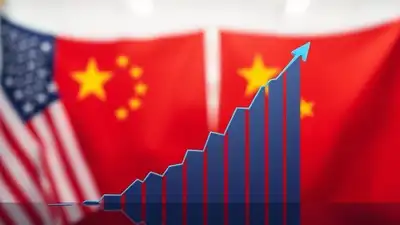US–China Trade Tensions Persist Amid Tech Controls and Rare-Earth Pressure
June 11, 2025 — Washington / Beijing
US–China trade tensions remain at the forefront of global economic discourse, despite the temporary pause in tariffs. While tariff wars once dominated headlines, the conflict has now evolved into a high-stakes standoff over technology controls and the critical rare-earth resources that power the world’s most advanced industries.
Recent diplomatic gestures from both nations led to a suspension of additional tariff hikes, offering a brief window of calm. However, that calm is proving deceptive. The United States has tightened restrictions on exports of advanced semiconductors, AI hardware, and other sensitive technologies to Chinese firms. Officials in Washington cite national security risks, particularly concerns over military applications of high-tech components.
In turn, Beijing has responded by flexing its dominance over rare-earth elements—essential minerals used in everything from smartphones to electric vehicles and missile systems. China currently controls over 70% of the global supply, giving it substantial leverage in this economic tug-of-war.
Trade policy experts warn that US–China trade tensions are entering a more complex phase. “This is no longer a tariff dispute,” said Dr. Elaine Ross, a global trade analyst based in Washington. “It’s a geopolitical chess game over who will lead the next technological era.”
Some U.S. economists now argue that relying on unilateral strategies like tariffs and export bans may be short-sighted. “China has proven more economically resilient than expected,” said Dr. Li Cheng, professor of international economics at the University of Hong Kong. “A multilateral approach, working closely with allies in Europe and Asia, is likely the most effective way to reshape China’s economic behavior.”
The consequences of prolonged US–China trade tensions could be severe. American tech firms are facing increased production costs, while Chinese manufacturers seek new partnerships in Asia, Africa, and Latin America. The ripple effects are already being felt in supply chains across the globe, particularly in the auto, energy, and defense sectors.
Global markets, meanwhile, remain volatile. Investors fear that a continued breakdown in trade and diplomacy could further disrupt economic recovery in the post-pandemic world. International bodies like the WTO and IMF have urged restraint and cooperation, warning that both countries have too much at stake to let the rift deepen unchecked.
As trade talks continue in the background, the world watches closely. The next chapter in US–China trade tensions could shape not only bilateral relations, but also the future of global commerce, technological innovation, and geopolitical power.

